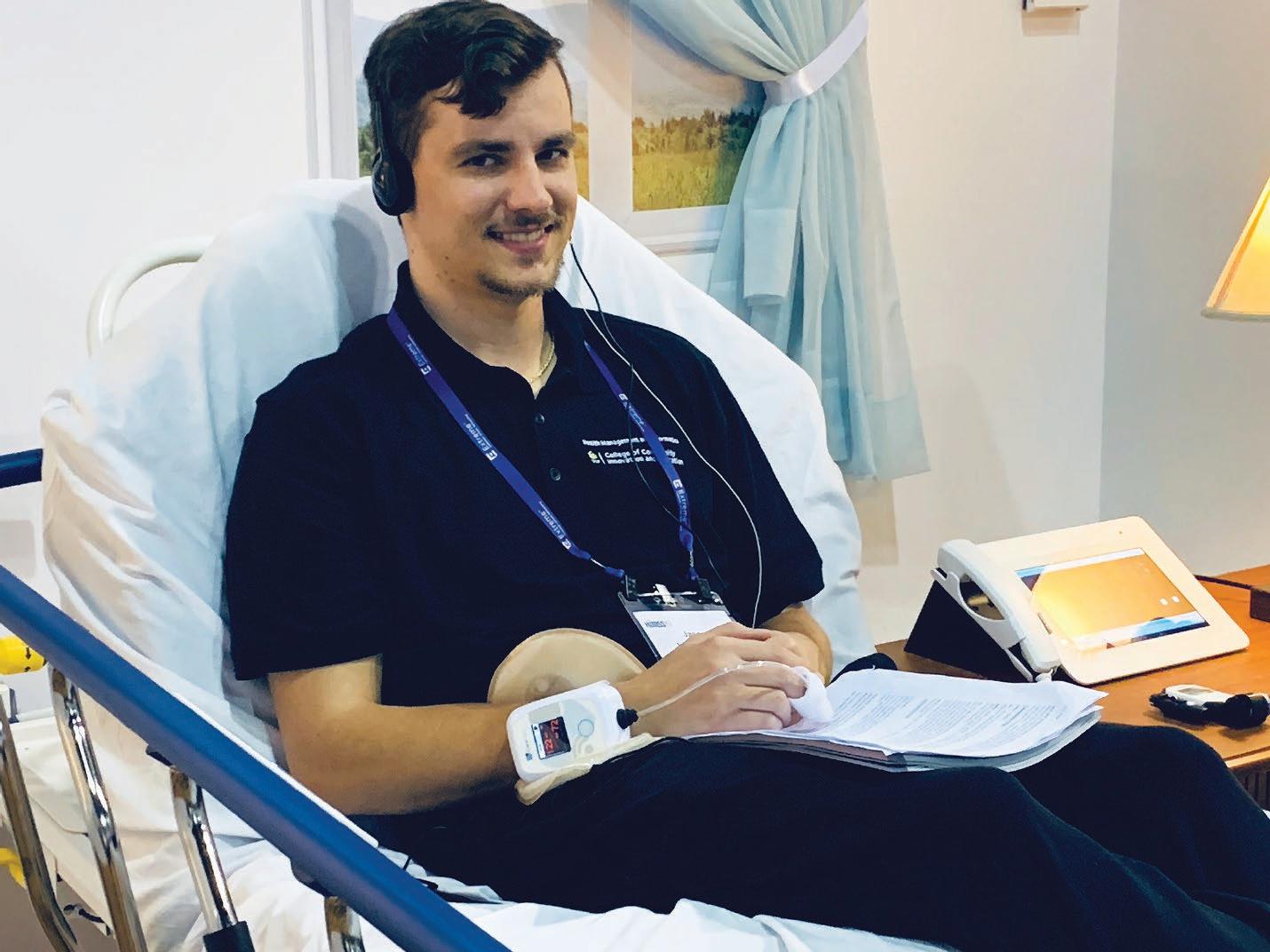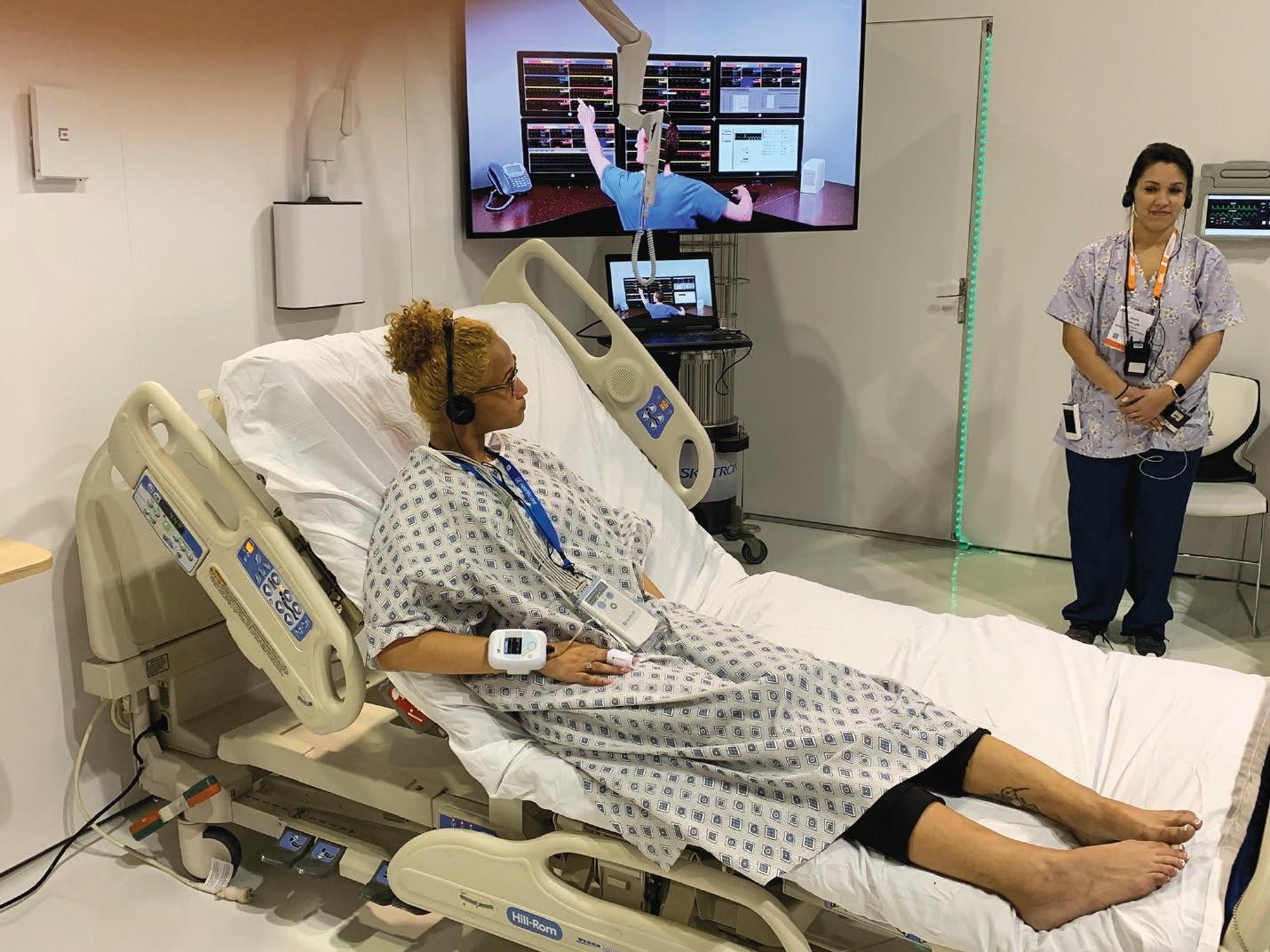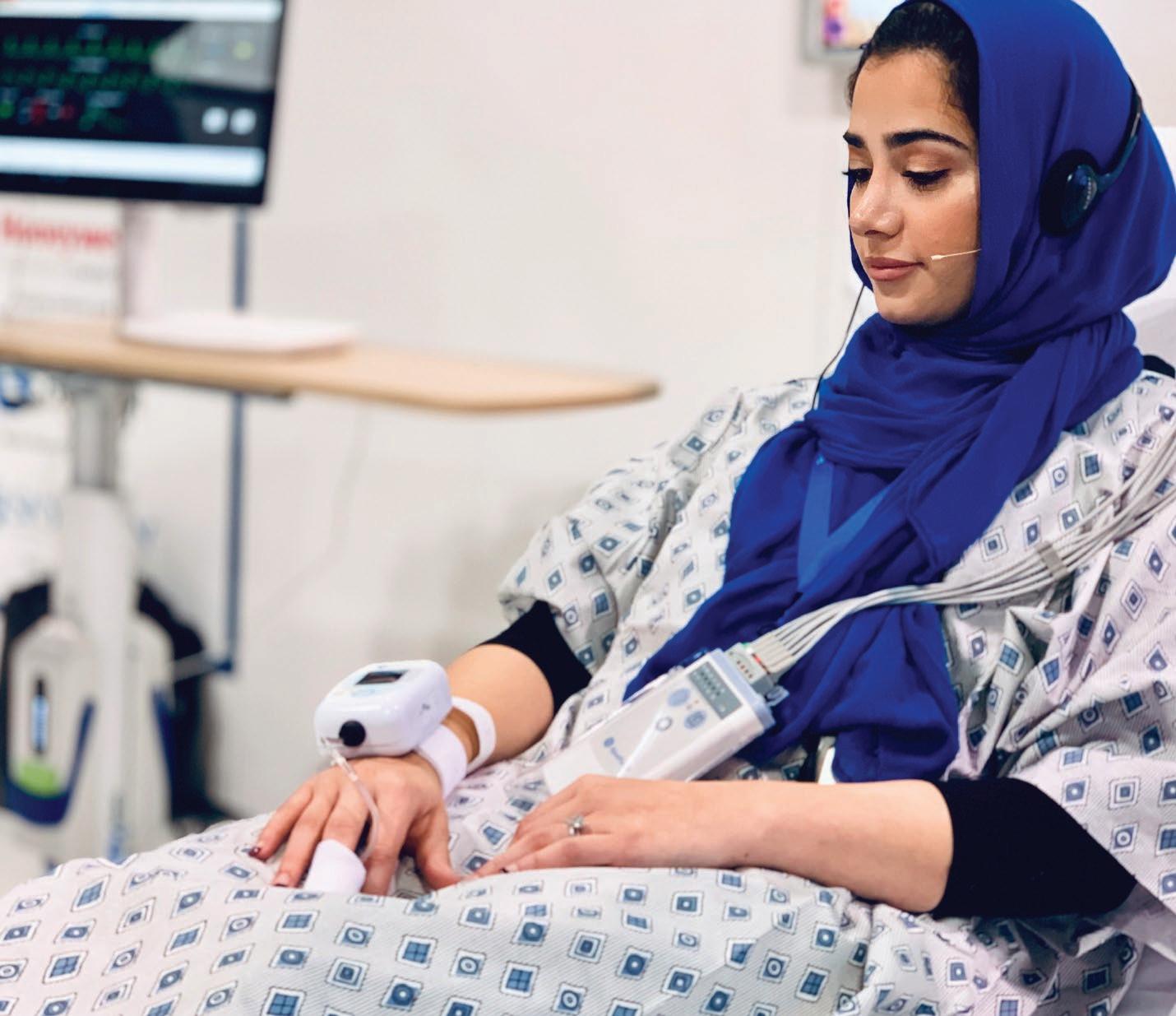6 minute read
Continuous Information Supports In-Time Actions
Camilla Slade, Staff Writer
Patients’ conditions don’t stand still just because monitoring isn’t being conducted at a specific time
There are periods between monitoring events, and changes that might take place during these periods could be missed. This is especially the case with blood pressure readings where changes might well offer early warnings about heart conditions which, if acted upon, could avert a more serious situation
THERE ARE many reasons, including agerelated and medication related factors 10 , why vital signs might vary from one person to another or, indeed, for one person at different times. However, as long as that person’s condition and circumstances are understood, then the principle that vital signs offer an objective assessment of a patient’s condition will still hold good. The continuing focus of concern is more to do with the uniformity, or lack thereof, in the way monitoring is carried out and how to avoid missing changes, even temporary changes, that occur between monitoring events.
How Vital Signs Are Monitored “The way vital signs such as blood pressure and temperature are monitored in hospitals needs to be standardized across the NHS, experts say.” Was the opening line for a BBC 11 report which continued, “Currently [2012] over 100 different models are used, causing confusion and sometimes delays in patients getting help.” Following the evidence to which the report referred, the 2018/19, Royal College of Emergency Medicine’s audit, ‘Vital Signs in Adults 2018/19’ 12 has been established to assess progress in standardization and meeting standards.
Although each vital sign has, in the past, been measured individually – temperature with a thermometer, blood pressure with a cuff, heart and pulse rate with a stethoscope and timer, lung function with stethoscope and spirometer… and so on – more often today, vital signs measurements are monitored with electronic devices and/or multimodal devices that will maintain continual measurement of these critical conditions.
Pitfalls and Limitations of Complexity The problem with many traditional methods for vital signs monitoring is that they are complex, costly and invasive, such as with the arterial catheter used to continuously measure blood pressure, and with any invasive process comes the risk of infection. “Catheters are medical devices that can be inserted in the body... By modifying the material or adjusting the way catheters are manufactured, it is possible to tailor catheters for cardiovascular, urological, gastrointestinal, neurovascular, and ophthalmic applications.” is how an article in Wikipedia 13 describes catheters. Also, traditional methods are often intermittent, i.e. there are periods between monitoring events, and changes that might take place during these periods could be missed. This is especially the case with blood pressure readings where changes might well offer early warnings about heart conditions which, if acted upon, could avert a more serious situation such as a stroke or a heart attack.
There might be a notion that non-invasive methods for monitoring vital signs are less ‘in touch’ with the patient than traditional methods but comparisons such as the British Journal of Anaesthesia, ‘Comparison of continuous noninvasive finger arterial pressure monitoring with conventional intermittent automated arm arterial pressure measurement in patients under general anaesthesia’ 14 found the simpler to use method just as effective as traditional methods.
The traditional image of a patient in a hospital bed surrounded by pieces of equipment, each of which is attached to or inserted in the patient, is not entirely wrong. It is also expensive in the time required to ‘plumb in’ and dismantle the equipment array, the time it takes to monitor each device and even the space the equipment fills. But, in a critical or intensive care facility, that might all be feasible because monitoring is necessary.
Continuous Versus Intermittent Monitoring Although continuous monitoring of vital signs is routine within most critical and intensive care units, it is less likely outside of that environment


Focus On Your Patient Not Your Monitoring Equipment Caretaker4DS Wireless Continuous NIBP and Viatls Signs Monitor Caretaker 4 Wireless Continuous NIBP and Vitals Signs Monitor
and yet, PubMed’s, ‘The impact of continuous versus intermittent vital signs monitoring in hospitals…’ 15 found that, “The majority of studies showed benefits in terms of critical care use and length of hospital stay. Larger studies were more likely to demonstrate clinical benefit... Three studies showed cost-effectiveness.” However, “Barriers to implementation included nursing and patient satisfaction and the burden of false alerts.” The study concluded that, “Continuous vital signs monitoring outside the critical care setting is feasible and may provide a benefit in terms of improved patient outcomes and cost efficiency.” A Journal of Medical Internet Research 16 publication went further with, “Vital signs monitoring is a universal tool for the detection of postoperative complications; however, unwell patients can be missed between traditional observation rounds. New remote monitoring technologies promise to convey the benefits of continuous monitoring to patients in general wards.” Science Direct 17 added, “Continuous vital signs monitoring on general hospital wards may allow earlier detection of patient deterioration and improve patient outcomes.”
Up until now, we’ve considered vital signs monitoring in the context of a healthcare facility but for some vital signs, such as blood pressure, continuous monitoring over a period of, say 24 hours, can provide a clinician with more and more useful information about a patient’s condition in their routine environment. The NHS 18 explains this as, “[Continual and home blood pressure monitoring] can give a better reflection of your blood pressure, as being tested in somewhere like a GP surgery can make you feel anxious and can affect the result.” Another NHS paper 19 cites a very real benefit for continuous blood pressure monitoring as, “Twenty-four-hour monitoring is thought to be more useful, as it produces an average score of blood pressure throughout the day and night. But it’s more expensive, so it’s used less often… [yet] The researchers found that 24-hour monitoring was much better than one-off clinic readings for predicting risk of cardiovascular death.”
Pulse decomposition analysis One specific application where continuous monitoring is useful is in pulse decomposition analysis, an algorithm that analyses components in the pulse, the components of the arterial pressure pulse envelope, which are the left ventricular ejection pulse component and the trailing pulse components. The value of this approach is explained by Research Gate 20 , “… pulse pressure appears to be a sensitive as well as specific marker for the detection of hemorrhage, [which] remains one of the leading causes of death on the battlefield as well as in civilian trauma cases while also being highly preventable if intervention can be implemented.”
Perhaps we can best sum up the value of continuous monitoring of vital signs as the ability to see and, if need be, react to changes in the patient’s condition in real-time, as they arise.

Continuous Monitoring
● Non-Invasive Measurement
● Vitals & Waveforms
● Wireless Communication
● Confi gurable Voice Prompts
● Pulse Oximetry measurement
● Integrated PDF reports
● Graphical History of Vitals
● Session Statistics






